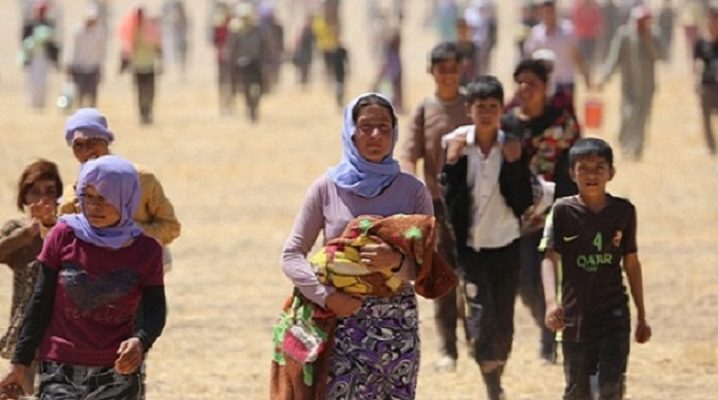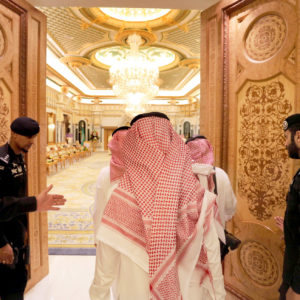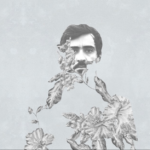On April 24, Turkish President Recep Tayyip Erdoğan followed through with his promise to move against Ankara’s nemesis: the leftist, Kurdish nationalist Kurdistan Workers Party (PKK) and its affiliates. Airstrikes that hit various locations throughout Syria also targeted a mountain in Northern Iraq that was inhabited by a small minority group known as the Yazidis.
Earlier in March, intense clashes broke out between the PKK and its affiliates and a special unit of Syrian Kurdish refugee fighters allied to the Kurdistan Democratic Party, the leaders of Iraqi Kurdistan, and Turkey.
The March fighting and April airstrikes were both examples of a larger proxy battle involving multiple foreign actors and various Kurdish factions. The tragedy of these escalations is not only that lives were lost, but that the Yazidis – a group widely persecuted for hundreds of years – are embroiled in a conflict they have little say in and which resulted from the attempted decimation of their community’s existence.
The United States should do its part to ensure the Yazidis are left alone, while pushing for reconciliation with their neighbors and helping them establish a “safe-zone” province in which they can govern themselves.
Who are the Yazidis?
Several towns and villages across Northern Iraq are home to the small ethno-religious minority Yazidi group. Having existed in the region for centuries, the Yazidis have often been persecuted because their neighbors mischaracterized them as “devil worshippers.” In reality, Yazidism has many elements of Christianity and Islam, but is distinct in its belief of seven great angels who watch over the world; the greatest is the Peacock Angel known as Malak Taus. The holiest site in Yazidism is in the village of Lalish, which contains the shrine of Sheikh Adi, a Sufi mystic originally from Lebanon. Yazidis believe the sheikh was an avatar for Malak Taus.
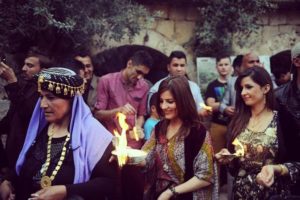
Yazidi New Year celebration
But one of the largest concentrations of Yazidis is found not in Lalish, but on top of the Sinjar Mountain and an adjacent town.
These Yazidis were easy targets for the Islamic State, which swept into Northern Iraq in the summer of 2014. The lack of a native defensive militia or police force – as well as strained relations with Kurdish and Arab neighbors – left the Yazidis unprepared for one of the worst genocides the group has faced in its entire existence. Thousands were slaughtered or displaced, while women were taken in as sex slaves and young children were brainwashed to become fighters, prompting the Obama Administration to take military action against ISIS.
Complicating matters, the PKK – a U.S.-designated terrorist group – and its Syrian offshoot led the charge to create a corridor for starving Yazidis to flee the mountaintop under American air cover. The PKK returned in 2015 to liberate Sinjar from the Islamic State’s clutches, alongside the U.S.-backed KDP Peshmerga.
The Sinjar Resistance Units
After the initial crisis in Sinjar ended, the PKK helped the Yazidis establish the Sinjar Yazidi Council and the Sinjar Resistance Units (YBS) militia. Most YBS fighters are Yazidi, and the PKK role is limited to a few commanders who remained on Sinjar. Between saving thousands of Yazidi lives during the ISIS onslaught and helping to create institutions and militias that empower Yazidis, the PKK has become very popular in Sinjar. With the memories of the ISIS raids fresh in their minds, many Yazidis – tired of being vulnerable and persecuted by their neighbors – joined the PKK’s efforts.
Even non-political Yazidis are attracted to the PKK’s ideology, not only because the group’s members fought hard to free them, but also because the ideology gives minorities a blueprint for self-determination, cultural self-preservation, and self-defense. The fact that the YBS is largely composed of Yazidis who suffered the Islamic State’s genocide also adds to its popularity. Although the Yazidis do not subscribe to the PKK’s grandiose ideological plans, in this group they found a willing partner and ally in their time of need.
The PKK and the Kurdish Dream
Many Kurds motivated by nationalism are also fed up with the current situation in the region. While the governing KDP has a strong economic and foreign policy relationship with Ankara, Turkey has often persecuted its own Kurdish population. These Kurds may find the PKK more attractive due to its “ideological purity” and commitment to Kurdish independence.
The PKK’s popularity is based on the perception that the group is not restrained in its attempts to achieve the Kurdish dream of independence the way the KDP is on account of its relationship with Ankara. Many Kurds have a soft spot for the Yazidis, because, for them, the Yazidis are “true Kurds” who follow a native Kurdish faith that has no relation to Islam, the Arabs’ religion. The existence of an ancient, native Kurdish group that practices this faith is used to support Kurdish nationalism by proving that the Kurdish roots in the region are ancient. The PKK members’ expressed desire to help these “true Kurds” allows them to portray themselves as the true fighters of Kurdish national identity.
An Independent Yazidi Force and PMU Problems
An independent Yazidi force does exist in the form of the Êzîdxan Protection Force(HPE), which is run by Haider Shesho. The HPE is made up of 7,000 fighters who are not beholden to any Kurdish political division. Shesho has regularly called for Yazidi self-determination and has a troubled relationship with the KDP, which arrested him in 2015 for his attempts to form what the group called an “illegal force.” After he was freed, Shesho begrudgingly agreed to work with the KDP, and some of his fighters joined the Ministry of Peshmerga. He recently announced that he is moving forward with creating an independent political party called the Yazidi Democratic Party.
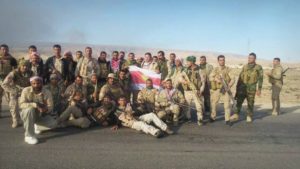
Êzîdxan Protection Force units
Trying to submit Sinjar under Peshmerga control by force will not work, as the local communities still do not completely trust the KRG government. Land grabs during the past several years, the Peshmerga’s abandonment of Sinjar, and other smaller actions by the KRG (such as forcefully closing Yazda, an Yazidi advocacy, aid and relief organization) have further distanced the Yazidis from the Kurds. The proposition to create a Yazidi-run Sinjar province has existed for years, and if pushed forward, will be a huge step in re-establishing trust between Yazidis and the KDP.
Complicating matters further, the two Iranian-backed militias that fight as part of the largely Shiite Iraq Popular Mobilization Units (or al-hashd al shabi) launched an operation to head toward the Iraq-Syrian region in May. After the operation ended with the PMUs’ liberation of Yazidi areas the Peshmerga had been unwilling to unfetter for more than two years, many Yazidis abandoned the HPE, Peshmerga and YBS to join the two Yazidi PMU battalions, the Lalish Battalion and the Kocho Battalion.
Conclusion
With complex foreign and domestic politics being played out on Sinjar, it would serve the international community’s best interests to ensure that the Yazidis are not dragged into or made victims of this fighting. The United States should lead the international community to push all groups to disengage from Sinjar for the sake of the vulnerable Yazidi population.
The U.S. should also support reconciliation talks between the Yazidi community and the KRG if it wants to bolster its Kurdish ally and ensure that the KRG is not faced with hostile Iranian or PKK influences on its border. Those talks would certify that never again will a weakened Sinjar be used to establish a militant group’s stronghold. Since the onset of the autonomous Kurdish region after the First Gulf War, Yazidis have generally operated in close cooperation with the KRG – at least compared to Baghdad – so it is not unreasonable to say that if Sinjar, Sheikhan, Acre and other Yazidi majority areas are united into one Yazidi-run province, they will have close relations to Iraqi Kurdistan and Iraq proper.
As a part of this reconciliation, all sides of the Yazidi community – be they the YBS, HPE, PMU factions or politicians – would need to meet and agree to form an alliance to prevent outside pressures from dividing their communities, and become part of an official state apparatus. After the horror the community faced during the rise of the Islamic State, this abandoned people should no longer be subject to terror or political interests from the outside.
The article was originally published philosproject.org at 27/7/2017
Yousif Kalian is a former research assistant at the Washington Institute for Near East Policy who has previously worked with Chaldean, Syriac, Assyrian, and Yazidi organizations. Follow him on Twitter @Ykaliany.


